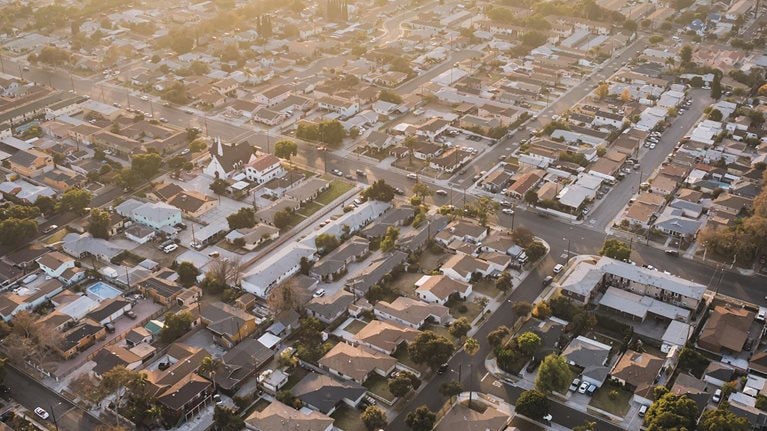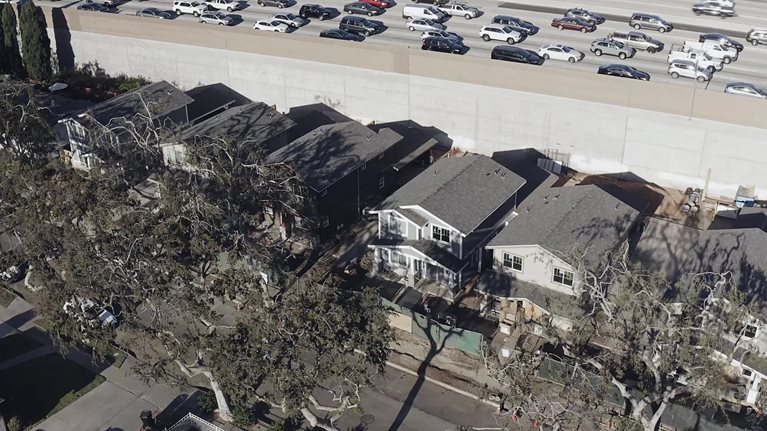Few, if any, American cities or metro areas are grappling with the large scale of homelessness seen in the San Francisco Bay Area. Locally, the issue is front and center, too: 70 percent of San Francisco residents cite homelessness among the top three problems in the city.1 And while California is on track to become the fourth-largest economy in the world,2 it also hosts half of the unsheltered homeless population in the United States,3 with a significant share of the population concentrated in the Bay Area. On any given night, 38,000 individuals in the Bay Area are homeless, an increase of 35 percent since 2019.4
People who are at risk for or experiencing homelessness each have a unique journey, and each individual is forced to navigate a complex maze of shelters, services, and programs that vary not only in size, scope, and approach but also in effectiveness. As this article details, homelessness in the Bay Area comprises three distinct problems but is largely perceived and treated as one via a complex and fragmented response ecosystem. A breakthrough may come in part from recognizing the distinct problems faced by those who are unstably housed and by considering bold approaches to reenvision our response ecosystem around people, not siloed individual programs.
As part of McKinsey’s Social Responsibility initiative, this article is an effort to bring our analytical capabilities and pro bono consulting to support the communities in which the firm operates. McKinsey examined homelessness in the Bay Area to offer the region’s leaders new perspectives so that together we can develop new approaches and improve existing solutions to what often feels like an intractable problem. Alongside these research efforts, McKinsey is providing pro bono support to several not-for-profit homeless services in the Bay Area that form a critical part of the response ecosystem.5 We seek to approach this space with humility, recognizing the vast challenges leaders face in tackling homelessness. We also feel gratitude to the individuals and institutions that work tirelessly to support the most vulnerable members of our community.
In this article, we consider how homelessness is defined and who is at risk, and examine how funding, changes brought by the COVID-19 pandemic, and other factors have affected homeless individuals and those at risk.
After years of efforts to ease homelessness, it’s clear that no single approach is completely effective. Homelessness in the Bay Area is the result of decades of systemic issues that have compounded and accelerated the crisis. Among them: historical redlining and the racial wealth gap, the patchwork nature of the social safety net, gaps in the mental healthcare system, a growing substance-use crisis, structural economic and workforce barriers, and reductions in affordable housing coupled with high housing costs relative to other geographies.6 There is no single cause of homelessness. It’s a host of wide-reaching and diverse political, economic, and social factors (Exhibit 1).

Structural changes have emerged in recent years: the pandemic propelled a shift in how the community cares for the unhoused, in that traditional congregate shelters have been replaced with new, innovative options, such as hotel-based emergency shelters, cabins, and vehicle triage centers7 that provide private spaces which are considered safer for residents.
Resources have never been greater. Funding has accelerated and become more flexible to meet needs: state spending grew to $4.7 billion from $800 million during the past three years.8 The state has also introduced more flexible grants, such as the Homeless Housing, Assistance and Prevention program, that have provided local jurisdictions with greater latitude over their local action plans. Cash infusions from pandemic-related programs include Project Roomkey9—albeit expected to expire in the first quarter of 2023—and Project Homekey,10 which continues into round-three funding in March 2023.
Additionally, the region has generated new solutions or expanded existing ones (including accessory dwelling units [ADUs], modular housing, and interim supportive housing)11 that inspire hope and future development in the space—even if they have not yet been scaled to meet demand.
Greater regional collaboration and calls for greater accountability, such as the creation of All Home’s Regional Action Plan,12 also signal a stronger organizational and systematic focus and partnership on the problem. Lastly, stakeholders across the board have gained a deeper understanding of the challenges and potential to stem the very human and societal consequences of homelessness.
Understanding the crisis
Our research suggests five key facts that the Bay Area community could consider in its direction to accelerate solutions to the crisis.
-
Homeless experiences vary and require a range of different interventions.
There is no universal or uniform path that leads to homelessness; each unhoused individual likely has had to contend with myriad hardships and causal factors. While each journey is unique, a robust response system could systematically target the most common factors. In the Bay Area, the public conversation around homelessness can be challenging because commentators often refer to different aspects of the experience or journey and potentially are talking past each other. From our research, there are broadly three distinct types of homeless experiences that have unique needs and potential solution pathways:
- At risk of becoming homeless: Homelessness is ultimately a challenge that is faced by people and families—not just those who are currently homeless but also the many individuals and families at risk of becoming homeless. More than one million people in the Bay Area earn below 30 percent of the Area Median Income,13 and many spend more than 75 percent of their income on rent.14 These individuals are forced to make hard choices every day to meet and balance their basic needs for food, healthcare, childcare, shelter, and transportation, and are often one unexpected expense or crisis away from becoming unhoused.
- Nonchronic homelessness: For most people who become homeless in San Francisco, it’s a relatively brief,15 and often a one-time, experience that is largely caused by financial factors such as job loss and eviction.16 In some cases, people may resolve their homelessness quickly, without significant support or services. In other cases, accessing interim housing and other supportive services becomes critical to quickly returning to a more stable situation. The research shows that the longer people remain unhoused, the higher the risk of experiencing acute illnesses and substance abuse.17
- Chronic homelessness: 35 percent of the homeless population in San Francisco are estimated to be chronically homeless, about ten percentage points higher than the rate of chronic homelessness nationwide.18 Chronically homeless individuals are the most visible and vulnerable people in the homeless community—they often suffer from disabling health conditions, such as mental illness and addiction, and chronic health issues that create tough barriers to becoming self-sufficient. For people who experience chronic homelessness, one-time interventions or basic services are likely insufficient to help them successfully transition out of homelessness. Instead, they will likely benefit from sustained case management and higher-touch service models designed to meet their needs, such as residential recovery programs.
-
Prevention is critical and does not receive investment commensurate with its effectiveness.
For every household that is permanently housed through the existing homelessness response system, four new households enter homelessness,19 according to the San Francisco Department of Homelessness and Supportive Housing. At this ratio, reducing inflows (either from within the region itself or external to it) into homelessness through preventative solutions for the populations at highest risk of becoming unhoused is critical to sustainably changing the trajectory of the crisis.
-
Early intervention could change the odds.
The current response system focuses the bulk of its efforts on the chronically homeless population—for example, Santa Clara County found that 5 percent of its residents experiencing homelessness, which largely consists of persistently homeless individuals, accounted for 47 percent of public and medical costs.20 In addition, eligibility for permanent supportive housing is reserved for those who have been unhoused for more than a year and have a disability of some kind, also known as being chronically homeless.21 However, research shows that earlier interventions have an outsize impact on future outcomes. Research shows that youth who were unhoused for more than 24 months are twice as likely to experience homelessness as adults, compared with youth who are unhoused for fewer than 12 months.22 Every additional day unhoused and potentially on the street brings compounding challenges. Investing in solutions that intervene earlier in the path to homelessness reduces inflows into chronic homelessness, which prevents deeper suffering at the individual level and provides a more cost-effective intervention at the systems level.
-
The crisis response ecosystem is fragmented.
Despite the urgency shown by leaders during the pandemic, today’s system remains fragmented. The nine counties that make up the Bay Area receive funding from more than 40 different sources at the federal, state, and local levels,23 with varying amounts and stipulations on usage. They also largely rely on contracting to more than 200 third-party service providers and not-for-profit organizations to provide homeless services across a range of areas. The variety of funding sources and challenges in coordination of service providers leads to a complex response ecosystem in which people experiencing homelessness often find it difficult to navigate and potentially miss out on accessing services that they are eligible for and could benefit from, because connecting with them can be too burdensome and complicated. There are opportunities for leaders to reevaluate capital allocation strategies, roles and responsibilities between public entities and contracted service providers, and outcomes-based accountability and oversight for contracted services.
-
Affordable housing remains key.
At the most basic level, homelessness is a function of housing availability. While there are many ways to affect the demand side of those who need accommodation, getting people housed will also require addressing the supply. The Bay Area must build 700 new affordable housing units per month to meet the demand for affordable housing among extremely low-income (ELI) households.24 Based on a historical rate of meeting only 30 percent of the region’s housing needs for low-income residents,25 achieving this will likely require significant changes in how housing is planned for and built. Currently, housing development costs and time-to-build in the Bay Area are three to five times the national average.26 While the recent housing plans put forward by San Francisco and other counties are a step toward increasing production, execution will be critical for making those plans a reality.27 The Bay Area must ramp up construction of affordable housing units, with a specific focus on serving households earning less than the Area Median Income, and local communities have a wide range of choices available to add new housing.28
A different view of the unhoused journey
To gain a better understanding of the homeless experience, our research sought to shift focus from the typical point-in-time snapshots of those experiencing homelessness to one that observed the flow of people entering and exiting homelessness over time. The visual flow below (Exhibit 2) outlines distinct pathways in and out of homelessness, providing insights on key parts of the journey when intervention may have the most impact. The cycle of entering, experiencing, and exiting homelessness is driven by a range of disparate triggers, and occurs on a wide range of timelines, as short as several days and as long as years.

Despite this heterogeneity, three distinct solution areas emerge—supporting the at-risk, accelerating exits for nonchronic cases, and providing high-touch recovery support for chronic populations—each with clear and pressing intervention priorities (see sidebar “Glossary of terms”).
There are multiple journeys made by those who at any given point may end up becoming homeless. To truly have a wide-reaching impact, the response system could consider not only those without homes but also those on the brink of homelessness—and the pressure points that can move those individuals closer to or further from housing scarcity.
Tackling homelessness will require the community to come together to recognize the distinct journeys and design solutions to match them in a clear way. Parallel investments should be made commensurate to need for all segments, rather than a piecemeal, “either–or” mentality that assumes a trade-off between those at risk and those who are chronically homeless (Exhibit 3).

1. For the at-risk population: Bolstering housing affordability and income security
Those who are currently housed but are at risk of homelessness would benefit most from preventative measures—keeping them sustainably housed is required for addressing the problem in the long term. Programs that increase the affordable housing stock, enhance income and economic mobility, and strengthen approaches to keeping people housed (for example, emergency rental assistance, tenant support services, and tenant right to counsel) could affect the growth trajectory of the demand side of the homelessness equation.
2. For the nonchronic population: Improving coordination among agencies in the response ecosystem
For those experiencing nonchronic homelessness, improving the efficiency and coordination of existing resources and support mechanisms can accelerate exits from the homelessness cycle. This may involve prioritizing interventions with demonstrated program effectiveness relative to other solutions (for example, interim supportive housing is ten times more effective than street outreach in transitioning individuals to permanent housing29). Likewise, improving case management, coordination, interoperability, and information sharing between organizations and agencies would reduce fragmentation in the response system, resulting in faster outcomes for families in need while saving and redirecting inefficient resources.
3. For the chronic population: Investing in intensive care pathways
The challenges of the chronically homeless extend beyond housing. The human suffering as well as the financial cost is often borne by the public health system and may be addressed holistically as a public health challenge with funding coordinated at a state or regional level. This may involve intensive interventions such as long-term residential recovery programs,30 integrated care campuses,31 and permanent supportive housing that reach the chronically homeless population, transition them into housing, and address their holistic needs. While these interventions can be costly, the overall costs of meeting the needs of a chronically homeless person typically decrease by 50 percent when they are placed in supportive housing,32 not to mention the benefits to the individual themselves.
Progress is possible
Despite concerted efforts and attention, homelessness in the Bay Area remains. However, we ought not surrender to the idea that homelessness is here to stay—we can and must bend the curve.
The Bay Area sees attention to the issue at local, state, and national levels; public and private resources are devoted to solving the issue, and there is a deep reservoir of on-the-ground talent and expertise (see sidebar “How the private sector can help”). To truly shift the tide, we must boldly reimagine our crisis-response ecosystem, which today is marked by insufficient housing inventory, overlapping mandates, minimal coordination, and many holes through which vulnerable individuals fall.
All the pieces need to come together—housing strategies, service-provider coordination, improved data systems, workforce development strategies, and alignment from all leaders, stakeholders, and residents. By treating homelessness as three distinct challenges, instead of one monolithic issue, solutions and resources can be rethought and potentially be much more effective. Homelessness has been a product of many compounding societal, policy, and market forces for decades, but the Bay Area could collectively act on choices that can begin to turn the tide on this historically intractable challenge.


